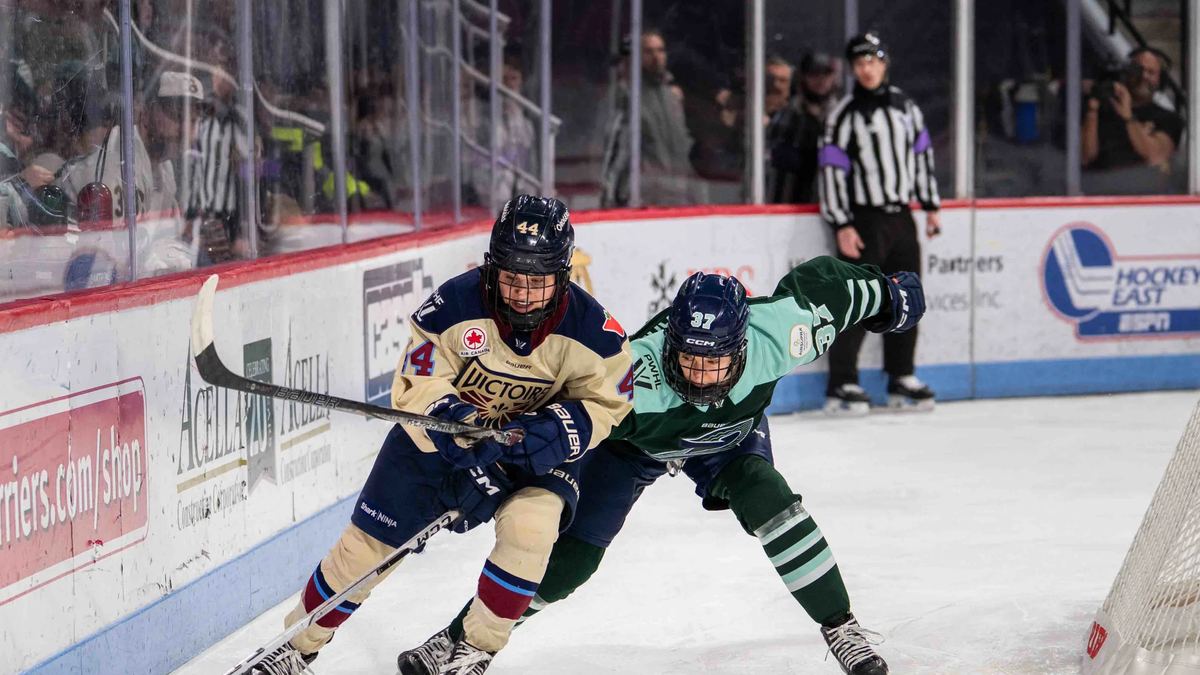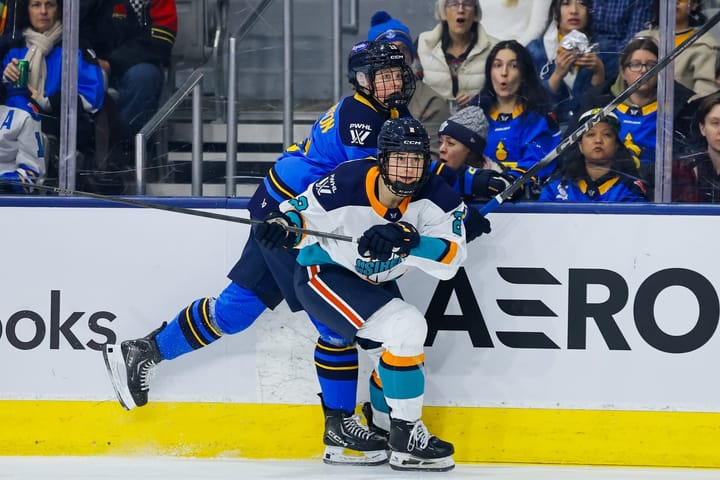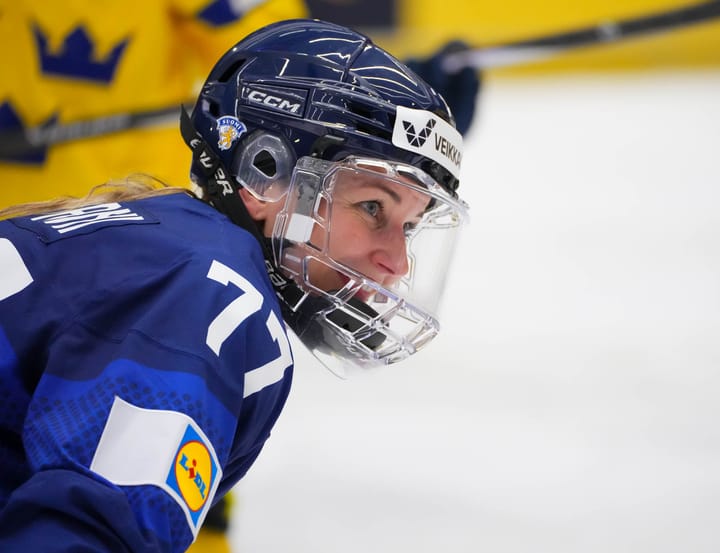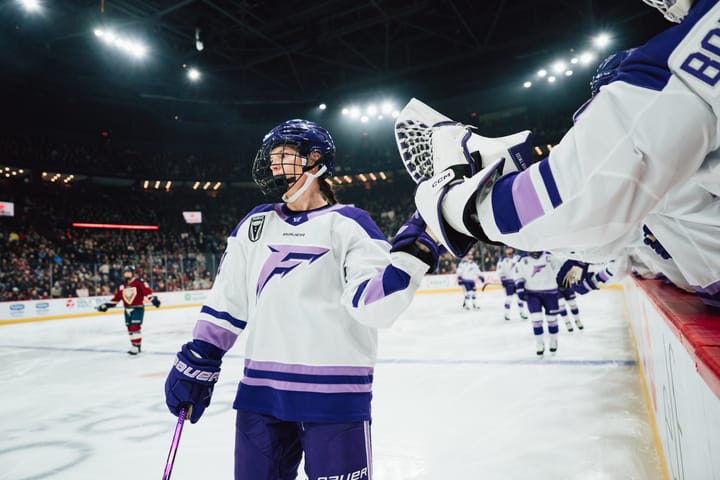The Impact of the No Escape Rule
The PWHL’s newest innovation was the main story heading into the league’s second season. Now with a full year’s worth of implementation to go off of, did it accomplish what it set out to do?

An inaugural season that saw an average of fewer than five goals per game between teams left the PWHL searching for ways to facilitate more ideal conditions for offense going forward. The result of their offseason brainstorming took the form of Rule 15.5, colloquially referred to as the No Escape Rule, which prevents teams from substituting the players on the ice at the time that play is whistled down for a penalty.
The rule’s purpose is twofold. Penalties, especially stick infractions like tripping and hooking, are often born of fatigue, a player being unable to keep pace with their opponent and being forced to impede their progress illegally. With the penalized player’s teammates likely being similarly tired, the punishment is compounded by forcing them to take on the opponent’s power play to start. In addition, the inability to change players results in unfamiliar and disorganized penalty kill units, including ones with just one defender alongside three forwards. Either of these outcomes, or even both simultaneously, would create the perfect storm for a power play goal to go up on the board.
PWHL rule changes:
— Kyle Cushman (@Kyle_Cush) November 19, 2024
• No Escape Rule: When a team takes a penalty, those players must remain on the ice for the ensuing faceoff. Same as after an icing
• Major penalty, game misconduct as default penalty for all illegal checks to head, as well as for any player who pulls hair…
Determining the No Escape Rule’s influence in practice, though, requires running the numbers between Season One, before it was implemented, and Season Two, when it was in play.
Overall Offense
With 452 total tallies across 90 contests league-wide, the PWHL did, if only barely, cross the five-goal-per-game threshold in 2025. However, a paltry increase in the even-strength scoring rate between seasons (3.71 to 3.78) indicates the majority of the additional output came from special teams. In 2024, 68 power play goals were scored league-wide on 408 attempts for an efficiency of 16.7%, whereas 2025 saw an even 100 PPGs on 551 chances, an 18.1% success rate. It’s a positive trend, but not one drastic enough to be able to fully credit the No Escape Rule without further investigation. Specific qualities of the power play goals, ones that are affected by the application of the rule, will be what tells the full story.
Pace of (Power) Play
10 of the 68 goals scored with a player-advantage in the inaugural season, or 14.7%, were done so within the first thirty seconds of the penalty. The No Escape Rule inherently lends itself to scoring early on into power play opportunities, with the attacking team taking advantage of a tired defending group before they’re able to clear the zone and make a line change. The effect of the rule from this perspective is striking, as the rate of these quick power play goals nearly doubled to 28% in 2025.
A Defender Down
Given that they’d leave their defense partner on the ice with three forwards to kill off their infraction, the No Escape Rule should also theoretically make it more costly for blueliners to be penalized. Once again, this holds true. 40 power play goals were scored on minor penalties assessed to defenders in 2025, up from 25 the season prior. The share of penalty calls in each season is also a necessary factor to consider, though, as 38.2% of offenses were committed by defenders in 2024 and that number could have noticeably shifted from season to season. However, what does 2025’s share, including the major penalties handed to Zoe Boyd, Rylind MacKinnon, and Kati Tabin in the total, come out to? 38.2%.
Innovation Interactions
A potentially unintended consequence of the No Escape Rule is the lack of synergy it has with the PWHL’s previous deviation from the typical hockey rulebook, the jailbreak goal. One fewer shorthanded goal was scored in 2025 than the year prior, and with more successful power plays as well as more disjointed penalty killing units, it’s a logical outcome. While this is more subjective than anything else related to the rule, I think it’s actually a positive development for the league. Sacrificing shorthanded goals in favour of power play goals will always lead to a net increase in scoring, while an increased scarcity of jailbreaks makes them even more exciting when they do occur.
Moving Forward
The first year of the No Escape Rule was an undeniable success, contributing to the rise in offense desired by the PWHL and creating previously unforeseen game states for teams to consider and adjust to. Heading into the upcoming season, with a larger schedule resulting from expansion and teams more accustomed to playing with the rule, maintaining these positive results will be the next test for its impact. That said, considering the announcement of the No Escape Rule came all the way in November of last year, we could still very well be in line for another innovation to shake things up even further in 2026.





Comments ()